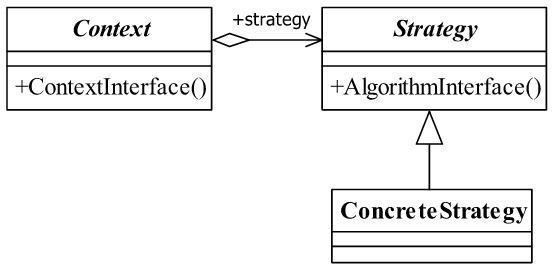策略模式
策略模式使用的就是面向对象的继承和多态机制。
定义
定义一组算法,将每个算法都封装起来,并且使它们之间可以互换。

实现
Strategy 抽象策略角色
策略算法的抽象,通常是接口,定义每个策略或者算法必须具有的方法和属性。
1 | public interface Strategy{ |
ConcreteStrategy 具体策略角色
实现抽象策略的具体算法。
1 | public class ConcreteStrategy1 implements Strategy{ |
Context 封装角色
封装上下文,屏蔽高层模块对策略、算法的直接访问,封装可能存在的变化。
策略模式的重点就是封装角色,它借用了代理模式的思路。
1 | public class Context{ |
Use
1 | Strategy strategy = new ConcreteStrategy1(); |
应用
优点
- 算法可以自由切换
只需要实现策略接口类,通过封装角色对其进行封装即可。 - 避免使用多重条件判断
1
2
3
4
5
6if (condition1){
strategy1.do();
}else if(condition2){
strategy2.do();
}
// ..... - 扩展性好
缺点
- 策略类数量多
- 所有策略类都需要对外暴露
上层模块必须知道有哪些策略, 然后才能决定使用哪一个策略,与迪米特法则相违背。
(迪米特法则:一个类对于其他类知道的越少越好)
注意事项
当具体的策略数量超过一定个数时,考虑使用混合模式,解决策略类膨胀和对外暴露的问题,否则会带来很大的系统维护成本。
使用场景
- 多个类只有在算法或者行为上稍有不同的场景
- 算法需要自由切换的场景
- 需要屏蔽算法规则的场景
策略枚举
当策略枚举不经常发生变化时可以使用。
1 | public enum StrategyEnum { |